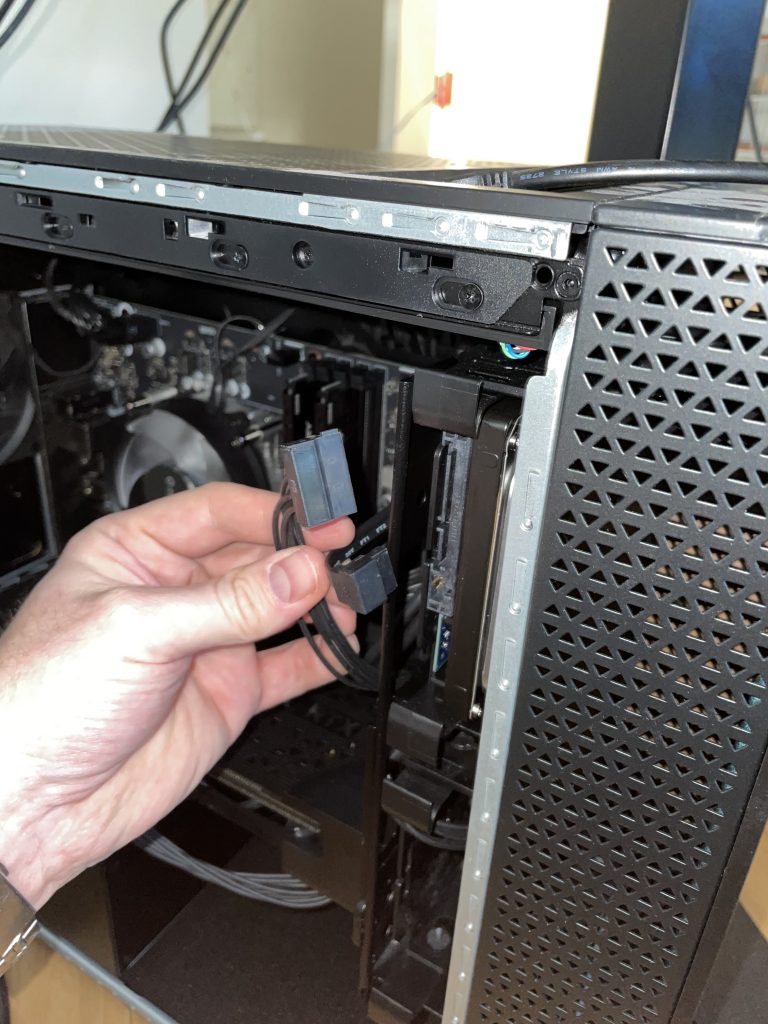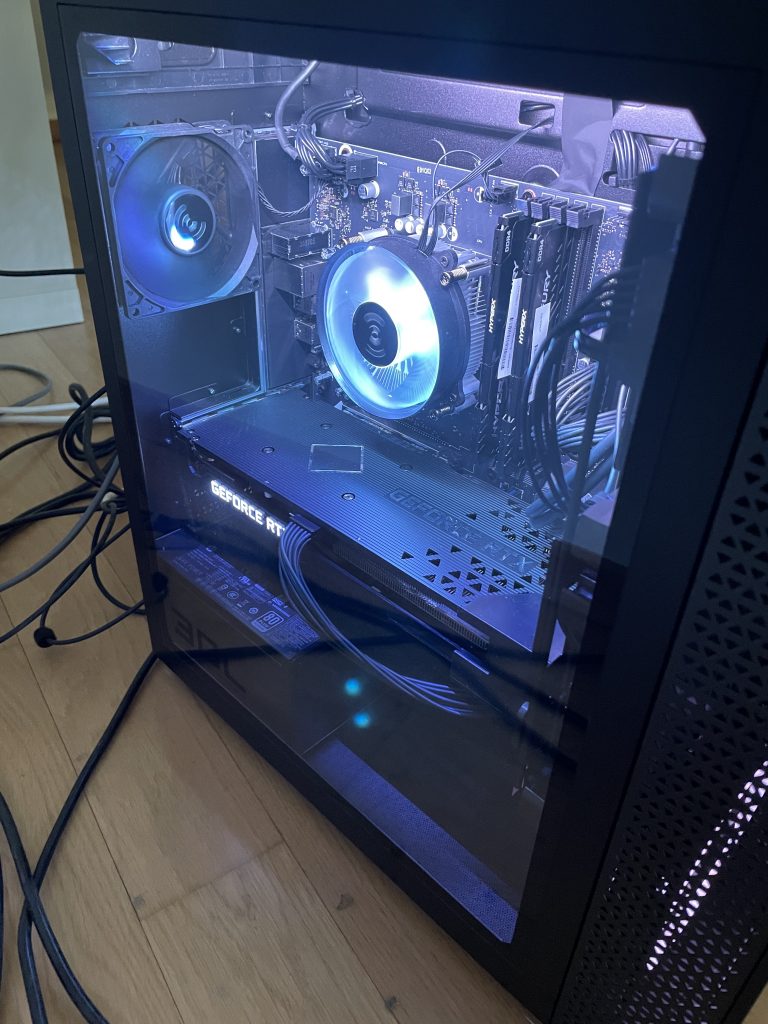Symptom:
- After switching on your HP Omen Desktop/Gaming PC, the boot process gets stuck at the “Omen” logo and Windows (the default OS) doesn’t get started anymore.
- Power supply, LED lights, mainboard, RAM, GPU, hard disk and SSD are working and there’s no indication that anything would be wrong with them (IOW: The PC per se isn’t dead and seems to work).
- The last time you used your PC, you might (or might not) have been prompted by an HP app (maybe the “HP Gaming Hub” or similar) to update some drivers or the firmware.
Reason/root cause:
HP apps apparently tend to mess with the CMOS and BIOS (e.g. automatically install updates), which may cause the HP Omen to get stuck the next time you try booting it.
Windows 10 would thus no longer start.
Solution:
Reset the PC’s CMOS.
How to reset the CMOS in a HP Omen 30L:
- Turn off the computer
I.e. hold the power button for a couple of seconds until lights go out. For double safety, you could even quickly disconnect and reconnect the power cable. - On your keyboard, press and hold the Windows + V keys
To rule out any other problem, it’s best to plug your original HP USB keyboard into a USB plug directly on the PC. - Still pressing those two keys, press and hold the Power button on the computer for roughly 1 second, then release the power button, but continue pressing and holding the Windows + V keys, until you see that the PC boots and doesn’t get stuck at the “Omen” logo again, instead, there might be notifications that further updates are being installed. Or you might get displayed a CMOS reset screen or hear beeping sounds.
Note: According to HP, one has to press the power button 2-3 seconds in this step to trigger a CMOS reset. For my HP OMEN 30L GT13, that was apparently too long however, as it shut down the PC instead. Just try it a couple of times, until you finally see something happening again on the boot screen (but do not interrupt ongoing updates!). - If there’s a message that there are pending updates, wait for them to finish.
If you see a message that the CMOS was reset, hit ENTER to reboot the PC
Credits:
https://h30434.www3.hp.com/t5/Gaming-Desktops/Omen-30L-GT13-boot-loop-after-bios-update/td-p/8056991
Some more useful tricks about the HP Omen 30L GT13
Even though booting stopped at the Omen logo, I was still able to enter the BIOS setup upon rebooting. To enter the BIOS setup, do the following:
- Press and hold the F10 key on your keyboard (on the original HP USB keyboard, you’ll actually have to press the “Fn” key and the “F10” key at the same time, as F10 is a secondary functionality only)
- Press and hold the power button for 3 seconds till the PC turns off, then hit the power button again to start the PC while you’re holding the F10 key (Fn + F10)
First, as I was indeed suspecting that something might have gone wrong with an accidental (or intransparent) BIOS update, I tried following a hint that if one disconnects the hard drive (and/or SSD?), the mainboard of an HP Omen would allegedly automatically fall back to the previous BIOS version.
Therefore, I tried to disconnect the HDD and start my PC like that. It didn’t have any positive effect though, as the boot process kept getting stuck at the Omen logo.

BTW, to open the HP Omen 30L case, you simply press the big “INTERNAL ACCESS” button in the upper right corner of the back side of the PC, then tilt the (plexi-)glass window, then tilt it back towards the case a bit and lift the window up and off.
A further complication in my case was that I also use a fairly new and cutting edge Samsung 49″ super wide screen monitor (Samsung LC49RG90SSUXEN, supporting natively 5120×1440 pixels at a 120 Hz refresh rate) for that PC (and sometimes also with my MacBook Pro, via a special 8k USB-C to DisplayPort 1.4 cable).
My experiences with any sort of Samsung devices have been a mixed bag so far, so for one, I don’t really trust the quality of Samsung’s hardware, firmware or software (although I can’t complain about this display, it has been all fine so far and I’d highly recommend it for simulators). Secondly, I’ve plugged some essential USB devices (like the original HP USB keyboard and the receiver of my beloved Logitech G305 mouse) directly to the display’s USB hub, rather than to the PC itself. To rule out any weird error (e.g. like a boot process stopping because of a missing keyboard, caused by a faulty USB hub or connection), I’d generally recommend disconnecting “exotic” devices (like steering wheels, web cams, joysticks, controllers, ..) that could potentially cause troubles and plugin the essential devices (keyboard, mainly, maybe also the mouse) directly to the PC.

